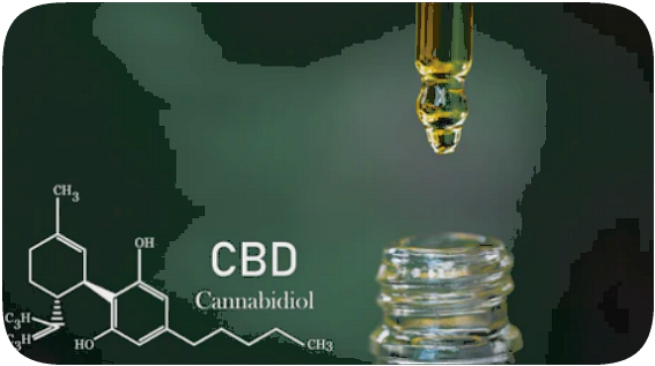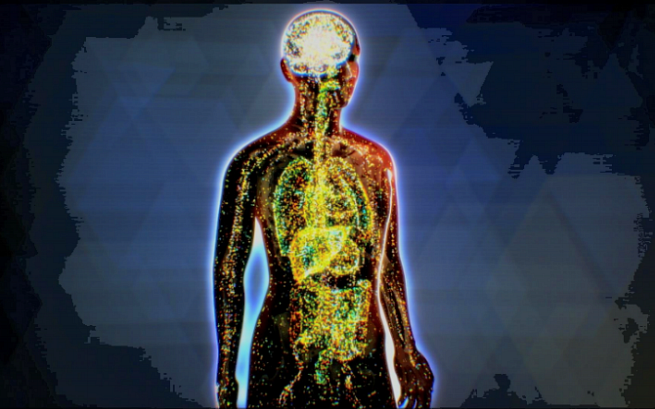Many of us have heard of the Immune System, the Nervous System, the Endocrine System, the Respiratory System amongst others, but very few have heard of the more recently discovered endocannabinoid system (ECS), which is amazing when you consider that the ECS is critical for almost every aspect of our moment-to-moment functioning. The ECS regulates and controls many of our most critical bodily functions such as learning and memory, emotional processing, sleep, temperature control, pain control, inflammatory and immune responses, and eating. The ECS is currently at the center of renewed international research and drug development – and it’s all been spearheaded and continues to be led by CBD.
The endocannabinoid system (ECS) is an ancient system that is believed to have evolved over 500 million years ago. It is wired throughout the bodies of humans and all vertebrates and invertebrates and designed to help maintain homeostasis — balance of processes — in the body. Though the ECS is an ancient system, scientists only recently discovered it in the 1990s, in the context of research exploring the effects of cannabis (marijuana and hemp) on the mind and body. In the course of this research, scientists discovered that the human body has cannabinoid receptors — cell proteins that respond to chemicals — distributed throughout the body. They also discovered that the human body makes a class of chemicals known as endocannabinoids that interact with these receptors to affect health.
What is the Endocannabinoid System?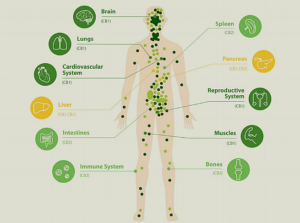
Every invertebrate and vertebrate (including humans) has an endocannabinoid system, whether they have taken CBD or not. The endocannabinoid system (ECS) is a molecular system made up of a vast network of chemical signals and cellular receptors located throughout our brain and body. As previously mentioned, these help regulate and balance many processes in the body.
The endocannabinoid system is made up of:
- Endogenous cannabinoids (endocannabinoids)
- Cannabinoid receptors
- Enzymes responsible for the synthesis and degradation of the endocannabinoids
Unlike the nervous system or cardiovascular system, the endocannabinoid system is not an isolated structural system located in a specific region of the body. Instead, the ECS is a receptor system broadly distributed throughout the body which is acted upon by cannabinoids and enzymes. Endocannabinoids and cannabinoid receptors can be found throughout the brain, organs, connective tissues, glands, and immune cells.
Endogenous Cannabinoids (Endocannabinoids)
Endocannabinoids are naturally occurring molecules found in the body. They exist to mediate our normal physiological functions and appear to have evolved in the brain to maintain biological harmony while also playing a role in neuronal plasticity (how the brain adapts to change). The two major endocannabinoids that have been discovered (so far) are:
- Anandamide (AEA) (ananda is the Sanskrit word for bliss)
- 2-Arachidonoyl glycerol (2-AG)
Both of these endocannabinoids help our internal functions run smoothly, and a healthy human body produces them as needed. When there is a deficiency or imbalance in our endocannabinoid production, then we may need to look at external ways to upregulate our endocannabinoid system.
Endogenous cannabinoids (endocannabinoids) are not to be confused with Phytocannabinoids which are found in plants. Phytocannabinoids naturally occur in a range of plant species but are most commonly associated with the cannabis plant. You’ve probably heard of the popular cannabinoids, CBD and THC, however there are hundreds of cannabinoids.
Cannabinoid Receptors
Cannabinoid receptors are found on the surface of cells throughout the body. When endocannabinoids bind to these receptors, this signals to the ECS to kick-start a response. Researchers have identified two primary cannabinoid receptors within the body.
The “cannabinoid” receptors in the brain — the CB1 receptors — outnumber many of the other receptor types on the brain. They act like conductors of a symphony, controlling the levels and activity of most of the other neurotransmitters. This is how they keep the music together: by immediate feedback, turning up or down the activity of whichever system needs to be adjusted, whether that is hunger, temperature, or alertness.
A second type of cannabinoid receptor, the CB2 receptor, exists mostly in our immune tissues and is critical to helping control our immune functioning, and it plays a role in modulating intestinal inflammation, contraction, and pain in inflammatory bowel conditions.
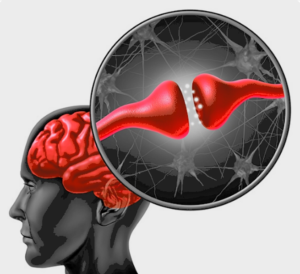 Endocannabinoids can bind to either receptor. The effects that result depend on where the receptor is located and which endocannabinoid it binds to. For example, endocannabinoids might target CB1 receptors in a spinal nerve to relieve pain. Others might bind to a CB2 receptor in your immune cells to signal that your body’s experiencing inflammation, a common sign of autoimmune disorders.
Endocannabinoids can bind to either receptor. The effects that result depend on where the receptor is located and which endocannabinoid it binds to. For example, endocannabinoids might target CB1 receptors in a spinal nerve to relieve pain. Others might bind to a CB2 receptor in your immune cells to signal that your body’s experiencing inflammation, a common sign of autoimmune disorders.
Enzymes
Enzymes are molecules that accelerate chemical reactions in the body. Enzymes in the ECS are responsible for the synthesis and degradation of endocannabinoids. This means that certain enzymes will help produce endocannabinoids on demand, and once they have carried out their functions in the body, other enzymes will then just as quickly break the endocannabinoids down again. There are two main enzymes responsible for this — FAAH, MAGL, modulation of these two enzymes can regulate the endocannabinoid system up or down, by increasing or decreasing endocannabinoid levels within the body.
How the ECS works?
The endocannabinoid system works by relying on each of its components – endocannabinoids, cannabinoid receptors and enzymes – to create balance within the body.
A typical endocannabinoid system function works when the body’s naturally produced endocannabinoids (which are present in various organs and tissues) become active by binding with a cannabinoid receptor (also located all throughout the body) to regulate a bodily function, such as digestion or sleep. Essentially, when a system or function in the body is out of balance, receptors bind to cannabinoids to help correct the problem. Once the endocannabinoid system brings the body back into balance, enzymes will break down the cannabinoids to prevent overcorrecting the problem.
For example, if you were to cut your arm, your body sends signals from the point of injury in your arm to your brain in the form of pain so that you are sure to pay attention to that injury and take action to protect it from the outside. Meanwhile, your body sends signals and chemicals to the site of injury to repair the damage from the inside. If that pain were to remain as intense as it was at the moment of injury, your body and mind would not be able to sustain that level of pain signaling indefinitely without going into shock. This is where the ECS sends a “cascade” of signals to parts of the body to 1) block the pain signals in the brain, and 2) start healing processes like reducing inflammation of the cells and tissue. These signals are initiated by the two endocannabinoids AEA and 2-AG. If these signals were to continue past the point of physical need, the body would then be out of balance in the opposite direction from injury. This is where the enzymes FAAH and MAGL are important- they stop the action of AEA and 2-AG (respectively) once they have completed the necessary signaling. It is all about keeping the body in balance/homeostasis.
CBD and the ECS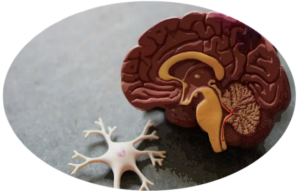
CBD works indirectly with the ECS to interact with our opioid, dopamine, and serotonin receptors, giving it the potential to reduce pain, depression and anxiety while boosting the immune system and helping with addiction. CBD is more likely to bind to the CB2 receptor, but it does not bind to the CB1 receptor like THC does. Because the stimulation of the CB1 receptors is what causes the ‘high’ associated with cannabis (an unwanted side effect for some), CBD taken without THC does not cause this effect. CBD may also work by preventing endocannabinoids from being broken down, allowing them to have a greater effect on your body. For example, CBD has been found to inhibit the activity of the FAAH enzyme, which breaks down the endocannabinoid anandamide (AEA). Because anandamide levels play a key role in memory, mood, appetite, sleep, and pain relief, CBD’s inhibition of the enzyme that breaks it down may aid these functions while stimulating a sense of happiness and mental wellness.
In essence, CBD acts a “reuptake inhibitor” that prolongs the natural life cycle of our own natural endocannabinoids so they can confer more therapeutic benefits. Much like you tone weak biceps by lifting weights and exposing your muscle fibers to extra muscle-making stimulus, CBD boosts the “tone” of your endocannabinoid system by exposing it to an extended dose of cannabinoid activity. This may be a key mechanism whereby CBD helps to protect the brain, buffer stress, and fight disease.
CBD and the Entourage Effect
In learning about the endogenous cannabinoid system, researchers made a key discovery that has proven of singular and unique importance: Whole plant extracts, like full-spectrum CBD (If a CBD product contains several naturally occurring cannabis plant extracts, such as terpenes and other cannabinoids — including up to 0.3% THC — it is considered full-spectrum CBD) seem to produce more effective results than cannabinoids used in isolation. The theory that whole plant cannabis extracts have a greater influence on the ECS is known as “the entourage effect.” It posits that all of the naturally-occurring compounds found in cannabis have a synergistic benefit when used together.
Full-spectrum CBD products contain a high concentration of CBD as well as the entire range of cannabinoids and terpenes found in the hemp plant. A popular alternative to full-spectrum CBD is CBD isolate, which is over 99% pure CBD. CBD isolate, however, does not promote the entourage effect.
It may seem counter-intuitive that a less pure product could produce better results, but consider this: the endocannabinoid system developed naturally over thousands of years in vertebrates large and small. CBD is not found in its 99% pure form in the wild. It’s likely that full-spectrum CBD is more effective because whole plant extracts more closely resemble the way humans and other animals would have consumed cannabinoids in nature.
CBD and the ECS - LOCK AND KEY
